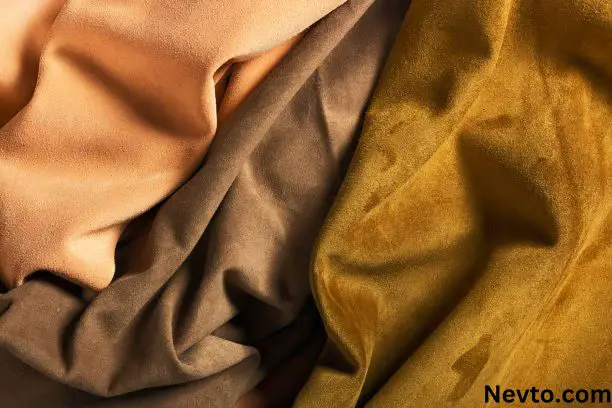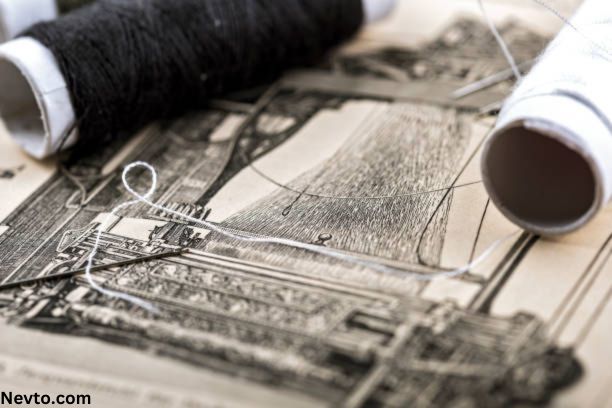Suede Leather: A Comprehensive Guide
Suede leather is a type of leather with a napped finish, giving it a soft, velvety feel. The term “suede” comes from the French “gants de Suède” meaning “gloves from Sweden,” due to its resemblance to Swedish glove leather.
Table of Contents
Brief History of Suede Leather
The use of suede leather dates back centuries, with early tanners recognizing the unique texture and softness of the reverse side of leather hides. However, the modern process of making suede leather was developed in the 19th century. With the invention of sandpaper, tanners could buff leather to create a fuzzy nap. They used a variety of techniques to enhance the nap, increasing the popularity of suede.
Properties of Suede Leather
Texture
The defining characteristic of suede leather is its soft, smooth nap. The fibers on the surface have been brushed and split from the corium layer through sanding and buffing. This creates a delicate, velvety texture. The nimble texture and feel make it distinct from other types of leather.
Durability
Despite its delicate appearance, suede leather is surprisingly durable. The sanding and buffing processes give it added strength and flexibility compared to unwaxed, full-grain leathers. It withstands abrasions and scuffing better than other delicate materials. However, it can be damaged by excessive moisture.
Appearance
Quality suede has an even nap across the surface. It looks consistent in color and texture. Lower quality suede may appear mottled with some areas of a weak nap. The napping process brings out the natural beauty of the leather grain beneath. High-end suede has an attractive, subtle sheen.
Versatility
The versatility of suede leather contributes to its popularity for a wide range of uses. It can be made from various animal hides like lamb, deer, elk and steer hide, each with their own properties. It can also be finished in a range of colors through dying and other treatments. This allows for many design possibilities. Read Jacquard Fabric: A Unique Textile Woven on Specialized Looms
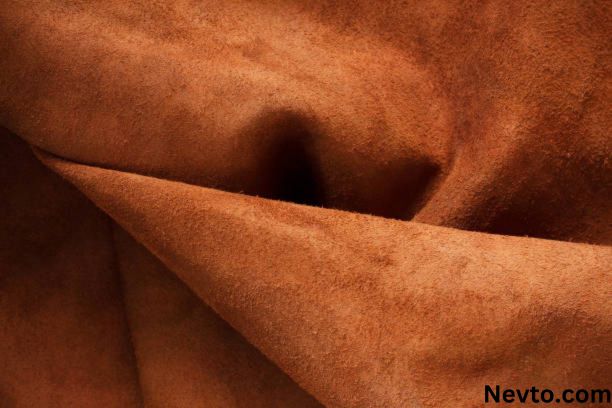
Manufacturing Process
Sourcing of Raw Materials
Suede starts with full-grain leather hides from various animals like goats, lambs, calves and deer. Hides must be carefully inspected and graded before processing. Only undamaged hides with fine grain and texture can produce quality suede. The hides are cured, soaked and prepared through beamhouse operations.
Tanning Process
The prepared hides undergo a tanning process to increase thickness and durability. They are treated with a mixture of tannins, salts and other ingredients. Chrome tanning, vegetable tanning or other methods may be used. This permanently alters the protein structure of the hides. It prevents decay and stabilizes the materials.
Finishing Techniques
After the tanning process, the hides are crusty leather. To make suede, the grain side of the crust leather is carefully split from the corium layer beneath. The corium side then goes through an extensive finishing process. First, it is dampened and passed through abrasive rollers to raise the nap. Next, it is buffed with emery or sandpaper to further separate the leather fibers. The suede may also be snuffed or subjected to metal brushes to raise the nap. Finally, it is sheared to an even thickness and dyed or treated. These techniques enhance the delicate, velvety texture that defines suede.
Uses of Suede Leather
Fashion Industry
One of the most common uses for suede leather is in fashion apparel and accessories. It is made into jackets, skirts, dresses, shirts, shoes, purses, wallets and more. Suedes provide styles both casual and luxury. Designers incorporate it into custom apparel or accessories and seasonal collections. Consumers value it for comfort and aesthetics.
Upholstery
The automotive and furniture industries frequently choose suede leather for seating and upholstery. Its soft texture enhances comfort, while its durability makes it a practical choice for heavy use in public spaces and vehicles. Car manufacturers use suede upholstery to create a luxurious look and feel. The abrasion resistance and ease of cleaning also suit suede for furniture.
Accessories
Beyond apparel, suede suits many accessory items like gloves, belts, wallets, and handbags. Its leather quality offers durability with structure to items that get daily wear and tear. The soft texture provides a pleasant tactile experience for users. Suede accessories project luxury to complement fine clothing.
Automotive Industry
Suede serves various applications in vehicles beyond upholstery. As a leather, it withstands constant abrasion from drivers and passengers. Car manufacturers use suede or suede embossing on steering wheels, gear shift covers, dashboard accent panels, and door inserts. Suede protects these high-traffic components while providing grip and visual interest.
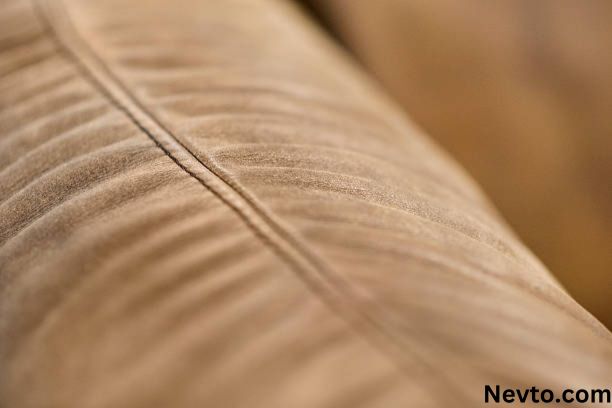
Advantages of Suede Leather
Softness
The hallmark velvety texture of suede leather provides exceptional softness and pliability. It conforms to the shape of the wearer or user for ergonomic designs and comfortable products. Even heavy suede garments or upholstery feel lightweight because of the delicate, flexible texture. It does not cause skin inflammation or chafing.
Breathability
The napped finish of suede leather contributes to breathability. It does not obstruct airflow against the skin like impermeable materials can. This ventilation quality keeps suede cool and comfortable to wear. It reduces sweat and overheating, making it a practical choice for clothing and upholstery.
Aesthetic Appeal
From high fashion design to handcrafted accessories, suede projects sophistication and luxury. It is soft texture and organic grain embody class and quality. Suede contributes textural interest and depth when incorporated into apparel or upholstery. It also produces well-tailored leather goods, from slim wallets to structured purses.
Ease of Care
While suede requires some special care, it is easier to clean and care for than many types of leather. Its napped finish resists the absorption of dirt and oil. Surface grime can be removed with simple brushing. Finishing sprays add water and stain protection. Proper storage and precautions keep suede looking fresh between wears. With routine care, suede maintains its beauty season after season. Read The Revolutionary Innovation of HQpotner: A Game-changer in the Tech Industry
Disadvantages of Suede Leather
Susceptibility to Stains
The open nap of suede leather makes it prone to oil- and water-based stains if not properly treated. Water spots may leave permanent rings, while oil transfers can leave dark patches in the nap. Food, grease, ink, and other liquids soak through the pores and discolor the surface. Avoiding exposure and treating spills promptly helps prevent stubborn stains.
Sensitivity to Moisture
While some treatment products offer water protection, excessive moisture poses one of the greatest threats to suede. Wet suede becomes waterlogged, loses its shape, stiffens and discolors. Extended exposure to rain, snow, and humidity can cause irreversible damage. Sweat and moisture buildup from wear deteriorate the delicate nap and stitching over time. Proper waterproofing and storage precautions must be taken.
Requires Specialized Cleaning
The texture of suede leather precludes machine washing or submersion cleaning with water. The agitation and excess moisture will destroy the delicate nap and ruin the material. Only specialized steam cleaning, spot treatment, or dry cleaning with light solvents should be used. Many everyday cleaners and methods are too harsh for fine suede.
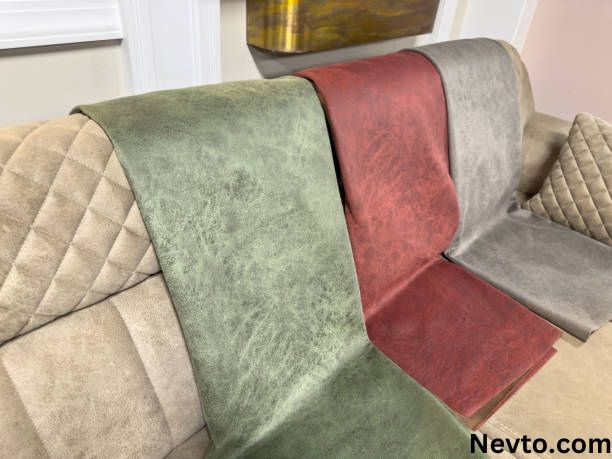
Maintenance and Care Tips
Brushing
Regular brushing with a soft brush or suede brush removes surface dirt and maintains the lifted nap of the suede. Brushing helps evenly redistribute oils and restore the grain and texture after wear. Gentle brushing avoids rubbing dirt into the fibers or damaging the nap.
Stain Removal
Stain removal starts with gentle dabbing at the spot with an absorbent cloth. Never rub the area, which forces particles into the suede. For oil-based stains, use a degreasing suede cleaner applied sparingly to the spot. For water-based stains or rings, use corn starch or talcum powder to absorb lingering moisture fully before brushing clean. Catching stains promptly improves success.
Waterproofing
Waterproofing sprays and protective balms add a vital shield against moisture damage. They contain polymers and waxes to repel water from the surface. Some also block staining, enhance weatherproofing, and provide UV protection. Reapply waterproofers after a few wears or as needed. Caring for suede with proper waterproofing products will extend its usable life dramatically.
Sustainability of Suede Leather
Environmental Impact
With consumer awareness of sustainability growing, the suede industry has increased efforts toward eco-friendly processing. Using plant-based tanning agents and non-toxic dyeing methods reduces environmental impact. Some tanneries also recycle waste scraps into suede for wallets, handbags, and other small leather goods. This helps limit material waste. However, suede still relies on animal agriculture, which impacts land usage and water consumption.
Ethical Sourcing Practices
Reputable suede tanners follow ethical guidelines on animal welfare and fair labor practices. Key industry groups promote sustainability programs and chemical restrictions among tanneries. Consumers should look for certification from organizations like the Leather Working Group when purchasing suede. This helps encourage responsible environmental stewardship and worker safety throughout production.
Conclusion
Suede leather offers a delicate, luxurious alternative to traditional leather materials. From clothing to cars, it is soft nap and sophisticated look elevate everyday designs. While requiring some special care, high-quality suede withstands years of use with proper maintenance. With innovations in eco-processing, suede production reduces environmental harm while meeting consumer demand. For unparalleled texture and timeless versatility, suede leather persists as a beloved industry essential.
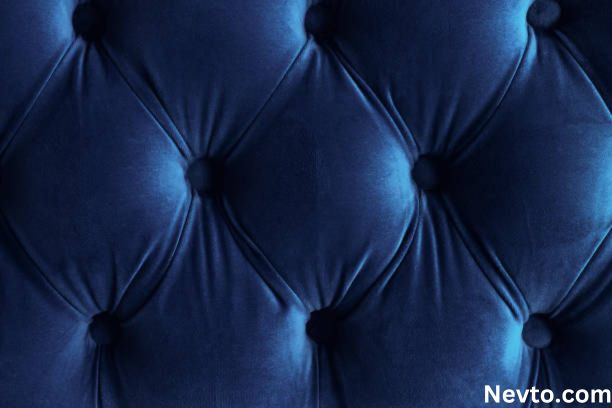
FAQs
How long does suede leather last with proper care?
With preventative steps like protective sprays and regular brushing, quality suede can maintain its beauty for over a decade. Avoiding moisture and prompt stain treatment also preserve suede.
Does suede leather stretch over time?
Yes, the fibers in suede leather have enough give to loosen and conform to wearers over time. Areas of garments and upholstery see the most stretch from friction and pressure from use.
Can you machine wash suede?
No, machine washing risks irreparable damage to suede’s delicate texture and fibers. Only specialized professional suede cleaning should be attempted for items that are very dirty.
Is faux suede as good as real suede?
Faux suede made from microfibers can approach the look and feel of genuine suede leather. However, real suede breathes better and develops a patina over time that faux materials cannot mimic. For cost and environmental impact though, quality faux sues are comparable.
Does suede leather keep you warm?
Yes, the dense nap of suede traps air to keep warmth inside garments close to the body. This makes it well-suited to leather jackets, gloves and other colder weather apparel. Any insulation also amplifies its comfort.

